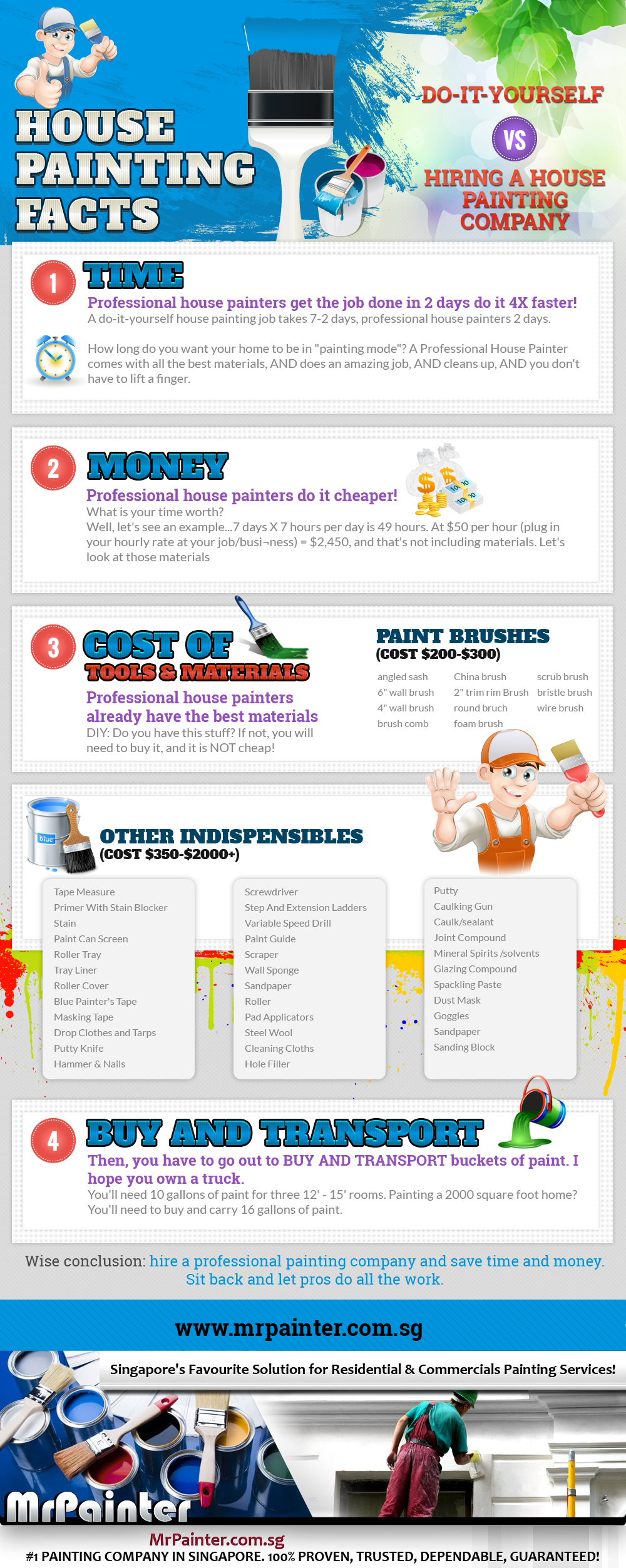Seasonal Factors In Industrial Exterior Painting: Trick Insights You Must Recognize
Seasonal Factors In Industrial Exterior Painting: Trick Insights You Must Recognize
Blog Article
Material Created By-Doherty Skafte
When you're intending a commercial outside paint project, seasonal variables can make or break your outcomes. You'll intend to consider how temperature and moisture influence paint application and drying out times. Picking house painters near me exterior can guarantee your paint adheres appropriately and lasts much longer. However which periods are absolutely the very best for this kind of job? Allow's discover the key elements that can impact your job's success.
The Effect of Temperature on Paint Application
When you're preparing a business outside painting task, the temperature can substantially impact how well the paint sticks and dries out.
Ideally, you intend to paint when temperature levels vary in between 50 ° F and 85 ° F. If it's also chilly, the paint may not cure effectively, bring about concerns like peeling or splitting.
On the flip side, if it's as well hot, the paint can dry also quickly, preventing appropriate attachment and resulting in an unequal finish.
You must likewise consider the time of day; morning or late afternoon uses cooler temperatures, which can be a lot more positive.
Constantly inspect the maker's referrals for the details paint you're using, as they commonly provide support on the optimal temperature range for optimum outcomes.
Moisture and Its Effect on Drying Times
Temperature level isn't the only environmental factor that influences your commercial exterior paint job; humidity plays a considerable duty as well. High moisture levels can decrease drying times substantially, influencing the overall high quality of your paint job.
When the air is saturated with dampness, the paint takes longer to cure, which can lead to issues like poor adhesion and a higher risk of mildew development. If you're painting on a specifically moist day, be planned for extensive delay times between layers.
It's crucial to keep an eye on neighborhood climate condition and plan appropriately. Ideally, go for humidity levels in between 40% and 70% for ideal drying.
Maintaining these factors in mind ensures your task remains on track and delivers a long lasting finish.
Best Seasons for Commercial Outside Painting Projects
What's the best time of year for your business exterior painting jobs?
Spring and very early autumn are normally your best options. During these periods, temperature levels are mild, and humidity levels are usually lower, developing optimal problems for paint application and drying out.
Stay https://localpaintersnearme76420.blogadvize.com/41863474/discover-the-vital-inquiries-to-position-prior-to-engaging-home-painters-and-introduce-the-strategies-for-revitalizing-your-home-with-a-brand-new-coat-of-paint of summer's intense heat, which can create paint to completely dry as well quickly, resulting in bad bond and coating. Likewise, wintertime's chilly temperatures can prevent proper drying and healing, risking the durability of your paint job.
Go for days with temperature levels between 50 ° F and 85 ° F for ideal outcomes. Keep in mind to inspect the regional weather forecast for rain, as wet problems can spoil your task.
Planning around these elements ensures your paint task runs smoothly and lasts much longer.
Verdict
In conclusion, planning your business exterior painting projects around seasonal considerations can make a substantial difference in the result. By scheduling work during the ideal temperatures and humidity levels, you'll make sure far better adhesion and drying times. Bear in mind to keep an eye on regional weather report and choose the correct time of year-- spring and very early fall are your best options. Taking Learn Additional will help you achieve a durable and expert finish that lasts.
